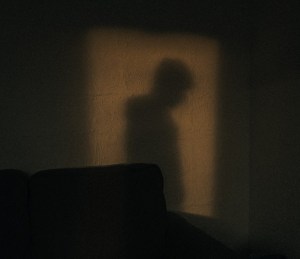By Mylika Scatliffe,
AFRO Women’s Health Writer,
mscatliffe@afro.com
It has been just about a year since Wanda Bibbins declared it was her last autumn season in the Baltimore suburbs.
Bibbins, 54, is ready to leave the four seasons experienced in the Maryland area for the promises of year-round sunshine offered in sunny Florida.
Ever since she was a young woman, autumn marks the time when Bibbins positive mood wanes as the days get shorter.
“I’d start to get cranky and just want to eat and sleep,” said Bibbins, 54.
After spending two months in Florida with her daughter last year, she noticed a marked difference in how she felt.
“I was there from December to February and my husband commented on the big difference he could see in my behavior and personality. I wasn’t as cranky and moody and going off on people,” said Bibbins.
About two years ago, Bibbins finally was able to put a name to what she had been feeling for most of her adult life – Seasonal Affective Disorder, or SAD.
SAD is a type of depression that occurs during certain seasons of the year, most commonly in fall and winter. It’s thought to be related to shorter days with less exposure to sunlight triggering a chemical change in the brain, according to information released by Johns Hopkins Medicine. A small percentage of people with SAD experience symptoms during the transition from spring to summer.
“We all tend to feel a little down when there is less sunshine, but ‘winter blues’ and SAD are different in that SAD is actually a disorder and has its own pathology,” said Dr. Paul Nestadt, assistant professor of psychiatry and behavioral science at the Johns Hopkins University School of Medicine.
SAD is characterized by increased feelings of sadness, sleeping more, and eating more, particularly carbohydrates. These symptoms may be associated with “winter blues,” but those suffering from SAD may experience these symptoms more intensely. In addition, they may struggle with a negative sense of self-worth, according to Nestadt.
“I consider myself a party girl, but I hate daylight savings time. I lost so much of my life, my motivation, my energy,” Bibbins said.
Bibbins noticed during the fall and winter she was no longer enjoying social situations. She found them to be overwhelming, not even wanting to celebrate her February birthday. She would decline her friends’ invitations to attend events or hang out with smaller groups. Eventually the invitations stopped coming.
For three years before the COVID-19 pandemic, Bibbins hosted the annual Thanksgiving gathering at her home and did most of the cooking. This year she was overwhelmed at the mere thought of it and canceled two days before the holiday.
Bibbins said she worried about what her family might think about her last-minute cancellation, but her husband and daughter were proud that she took ownership of her needs and feelings, practiced self-care, and realized canceling was in her best interest, instead of forcing herself to push through.
“In past years, everyone would be over at my house, and I’d just disappear, go sit in the dark in the bathroom, and cry because it was all just too much,” Bibbins said.
That’s a sobering admission for the self-confessed “party girl.”
SAD is not common. “About one to three percent of the population suffers from SAD and of that one to three percent, approximately 20 to 25 percent may already suffer from other mood disorders,” said Nestadt.
“The important distinction to make between just a case of the winter blues and seasonal affective disorder is dysfunction. People dealing with SAD experience various levels of dysfunction – insomnia, negative self-attitude, anhedonia, which is the inability to enjoy normally pleasurable activities, and even suicidal thoughts,” said Nestadt.
Nestadt has treated patients with SAD, noting medication can be prescribed depending on the severity of one’s symptoms. In addition, light therapy and behavioral changes also help.
“There is a correlation between light and sleep. Exposure to the blue light we get from the sun is very effective treatment for SAD. Vitamin D is also helpful as low vitamin D levels are also correlated with depression,” said Nestadt.
Light therapy boxes can offer relief, but for some people light therapy may be more productive when combined with another SAD treatment like psychotherapy or antidepressants. The light therapy box is turned on upon waking in the morning and left on while getting ready for the day.
The correlation between exposure to blue light and SAD relief also explains the lure of the Sunshine State for Bibbins.
“Making behavioral changes are effective for relief from SAD. Sleep hygiene is very important – getting enough sleep, not having big meals just before bedtime, and only using the bed for sleep and sex,” said Nestadt.
“Getting exercise is another crucial factor. In the fall and winter, we become more sedentary – it’s cold outside and getting dark earlier making it easier to not prioritize an exercise routine,” Nestadt said.
SAD also has physical implications. A 2015 study conducted at the University of Texas Health Science Center at Houston found that depressive episodes can alter levels of stress related opioids in the brain and increase levels of inflammatory proteins in the blood that are linked to an increased risk for heart disease, stroke and metabolic syndrome.
Bibbins, who also has atrial fibrillation and Crohn’s disease, described feeling physical pain during the winter. “I have pain in my back and legs, and inflammation – it even shows up in my blood work,” Bibbins said as she pointed out her inflamed shoulders.
According to the National Institute of Mental Health, “SAD is not considered a separate disorder, rather it’s a type of depression that is seasonal in nature. The symptoms of SAD include those associated with major depression, and some specific symptoms that differ for winter-pattern and summer-pattern SAD.”
Major depression symptoms may include feeling depressed almost all day every day, loss of interest in favorite activities, weight and/or appetite changes, trouble sleeping, feelings of agitation or sluggishness, low energy, feelings of hopelessness or low self-worth, difficulty concentrating, and frequent thoughts of death or suicide.
SAD symptoms last four to five months out of the year. In addition to the symptoms of major depression noted above, additional specific symptoms for winter-pattern SAD may include:
- Hypersomnia (oversleeping)
- Overeating, carbohydrates in particular
- Weight gain
- Social withdrawal (feeling like “hibernating”)
Specific symptoms for summer-pattern SAD may include:
- Insomnia (trouble sleeping)
- Poor appetite, leading to weight loss
- Restlessness and agitation
- Anxiety
- Episodes of violent behavior
Bibbins has experienced extreme irritability and agitation, even “going off on people” at times, but wants everyone to know that’s not representative of her as a person.
“I want people to know I don’t mean any harm, I don’t want to hurt people, and despite my dealing with SAD, my heart and mind are still in a good place,” said Bibbins.
For more information on dealing with seasonal depression please visit https://www.nimh.nih.gov/health/publications/seasonal-affective-disorder or www.hopkinsmedicine.org/health/conditions-and-diseases/seasonal-affective-disorder.
Help us Continue to tell OUR Story and join the AFRO family as a member –subscribers are now members! Join here!
The post Daylight Savings Time means shorter days and, for some, seasonal depression appeared first on AFRO American Newspapers .










